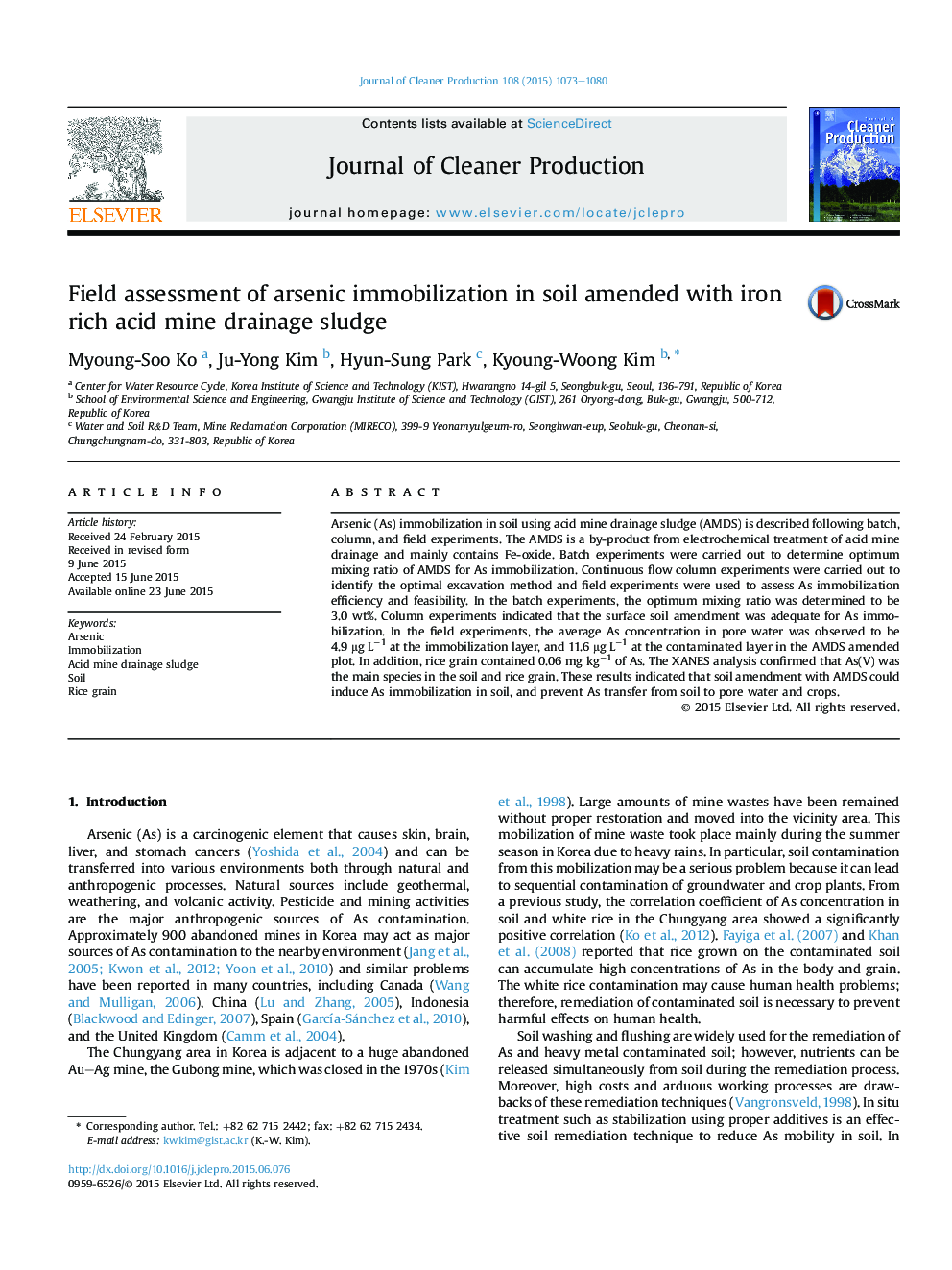| Article ID | Journal | Published Year | Pages | File Type |
|---|---|---|---|---|
| 10688236 | Journal of Cleaner Production | 2015 | 8 Pages |
Abstract
Arsenic (As) immobilization in soil using acid mine drainage sludge (AMDS) is described following batch, column, and field experiments. The AMDS is a by-product from electrochemical treatment of acid mine drainage and mainly contains Fe-oxide. Batch experiments were carried out to determine optimum mixing ratio of AMDS for As immobilization. Continuous flow column experiments were carried out to identify the optimal excavation method and field experiments were used to assess As immobilization efficiency and feasibility. In the batch experiments, the optimum mixing ratio was determined to be 3.0 wt%. Column experiments indicated that the surface soil amendment was adequate for As immobilization. In the field experiments, the average As concentration in pore water was observed to be 4.9 μg Lâ1 at the immobilization layer, and 11.6 μg Lâ1 at the contaminated layer in the AMDS amended plot. In addition, rice grain contained 0.06 mg kgâ1 of As. The XANES analysis confirmed that As(V) was the main species in the soil and rice grain. These results indicated that soil amendment with AMDS could induce As immobilization in soil, and prevent As transfer from soil to pore water and crops.
Keywords
Related Topics
Physical Sciences and Engineering
Energy
Renewable Energy, Sustainability and the Environment
Authors
Myoung-Soo Ko, Ju-Yong Kim, Hyun-Sung Park, Kyoung-Woong Kim,
